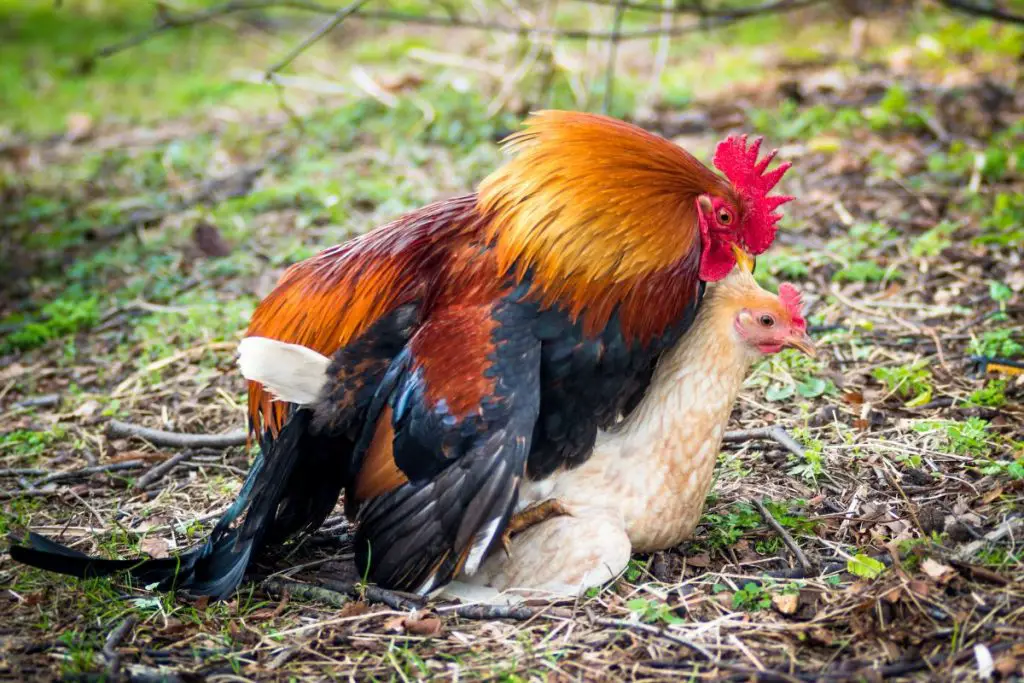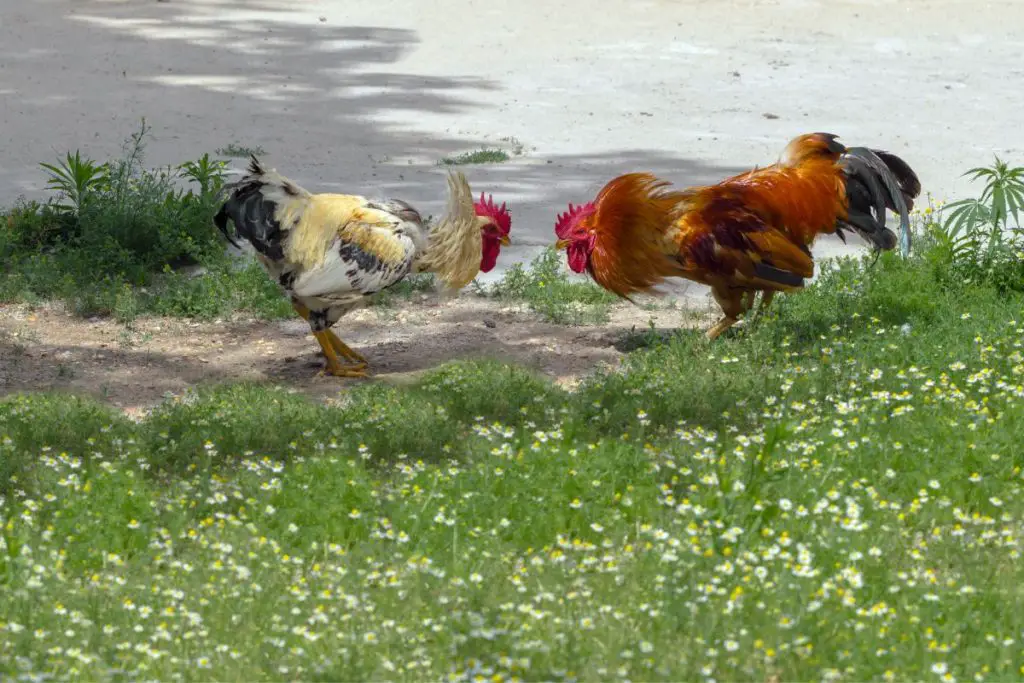Understanding the reproductive process of chickens is essential for anyone interested in poultry farming or simply curious about nature's fascinating mechanisms. Roosters play a vital role in fertilizing chicken eggs, and this article will delve into the detailed process while providing valuable insights into the science behind it.
From the basics of reproduction to the intricate role of roosters, we will explore how eggs become fertilized and the importance of this process in maintaining healthy chicken populations. Whether you're a seasoned poultry farmer or just someone eager to learn, this guide will provide all the information you need.
This comprehensive article will cover everything from the biology of chickens to practical tips for ensuring successful fertilization. By the end, you'll have a clear understanding of how roosters contribute to the fertilization process and why it matters for both domestic and wild chickens.
Read also:Malcolm Gladwell And Kate A Deep Dive Into Their Influence And Impact
Table of Contents
- Biological Basics of Chicken Reproduction
- The Role of Roosters in Fertilization
- How the Fertilization Process Works
- Factors Affecting Successful Fertilization
- Signs of Successful Fertilization
- Common Issues in Fertilization
- Tips for Improving Fertilization Chances
- Practical Applications for Farmers
- FAQ About Rooster Fertilization
- Conclusion
Biological Basics of Chicken Reproduction
Understanding Chicken Reproductive Anatomy
Before diving into the specifics of how roosters fertilize chicken eggs, it's crucial to understand the reproductive anatomy of both male and female chickens. Hens, or female chickens, have a single functional ovary that produces eggs. These eggs are released into the oviduct, where they can be fertilized if sperm is present.
Roosters, on the other hand, have two testes that produce sperm. The sperm is stored in the cloaca, a shared opening for reproductive, digestive, and urinary systems. This unique anatomy plays a significant role in the fertilization process.
Key Differences Between Male and Female Reproductive Systems
- Hens have a single ovary, while roosters have two testes.
- The oviduct in hens is a complex structure designed to nurture and protect the developing egg.
- Roosters' sperm is stored in the cloaca, ready for release during mating.
The Role of Roosters in Fertilization
Roosters are indispensable in the process of fertilizing chicken eggs. Their primary role is to provide sperm to the hen, which fertilizes the egg inside her oviduct. Without a rooster, eggs laid by hens remain unfertilized and cannot hatch into chicks.
How Roosters Mate with Hens
The mating process involves the rooster mounting the hen and aligning their cloacas. This brief but crucial moment allows the transfer of sperm from the rooster to the hen. Once inside the hen, the sperm travels to the oviduct, where it awaits the release of an egg.
Frequency of Mating
Roosters can mate multiple times a day, ensuring that hens have a consistent supply of sperm. This frequency is vital for maximizing the chances of successful fertilization, especially in large flocks.
Read also:Justin Kroma Age Unveiling The Life And Journey Of A Rising Star
How the Fertilization Process Works
The fertilization process begins when the rooster's sperm enters the hen's oviduct. Here, the sperm waits for the hen to release an egg. When an egg is released, it travels through the oviduct, where it can meet the waiting sperm and become fertilized.
Steps of Fertilization
- Sperm is deposited into the hen's cloaca during mating.
- The sperm travels to the oviduct and awaits the release of an egg.
- Once the egg is released, it combines with the sperm to form a zygote.
- The fertilized egg continues its journey through the oviduct, where it is surrounded by albumen, shell membranes, and finally the shell.
Timeframe for Fertilization
After mating, sperm can remain viable in the hen's oviduct for up to 30 days. This longevity allows for multiple eggs to be fertilized from a single mating session, increasing the efficiency of the process.
Factors Affecting Successful Fertilization
Several factors influence the success of fertilization in chickens. Understanding these factors can help farmers and enthusiasts optimize the process.
Age and Health of Roosters
- Young, healthy roosters tend to produce higher-quality sperm.
- Older roosters may experience a decline in fertility due to age-related factors.
Diet and Nutrition
A well-balanced diet is crucial for both roosters and hens. Essential nutrients like protein, vitamins, and minerals support reproductive health and increase the chances of successful fertilization.
Signs of Successful Fertilization
Determining whether an egg has been fertilized can be done through specific signs. These signs are important for farmers who wish to incubate eggs and hatch chicks.
Checking for the Fertile Spot
A fertilized egg will have a small white spot, known as the germinal disc, visible on the yolk. This spot indicates the presence of a zygote and is a clear sign of successful fertilization.
Incubation and Development
Once fertilized, eggs can be incubated to allow the embryo to develop. Regular monitoring during incubation ensures that the eggs are developing correctly and that conditions remain optimal for hatching.
Common Issues in Fertilization
Despite the efficiency of the fertilization process, several issues can arise that hinder successful fertilization. Addressing these issues is crucial for maintaining healthy chicken populations.
Infertility in Roosters
Infertility in roosters can be caused by various factors, including genetic defects, disease, and environmental stress. Identifying and addressing these issues can improve fertility rates.
Improper Mating Techniques
Mating techniques play a significant role in successful fertilization. Ensuring that roosters and hens are properly paired and that mating occurs under optimal conditions can enhance the chances of fertilization.
Tips for Improving Fertilization Chances
To maximize the chances of successful fertilization, consider implementing the following tips:
Optimal Environment
- Maintain a clean and stress-free environment for both roosters and hens.
- Ensure adequate space for movement and mating.
Regular Health Checks
Regular veterinary check-ups can help identify and address potential health issues that may affect fertility. Keeping chickens healthy is key to successful reproduction.
Practical Applications for Farmers
For farmers, understanding how roosters fertilize chicken eggs is essential for managing poultry operations effectively. By applying the knowledge gained from this guide, farmers can improve fertility rates and increase their flock's productivity.
Implementing Best Practices
- Adopt best practices for mating and breeding.
- Monitor flock health and adjust diets as needed.
FAQ About Rooster Fertilization
Can Eggs Be Fertilized Without a Rooster?
No, eggs cannot be fertilized without a rooster. While hens can lay eggs without a rooster, these eggs will be unfertilized and cannot develop into chicks.
How Often Should Roosters Mate with Hens?
Roosters can mate multiple times a day, and frequent mating ensures a consistent supply of sperm for hens. This frequency is ideal for maximizing fertilization chances.
Conclusion
In summary, understanding how roosters fertilize chicken eggs is crucial for anyone involved in poultry farming or interested in chicken reproduction. From the biological basics to practical applications, this comprehensive guide has covered all aspects of the fertilization process.
We encourage readers to apply the knowledge gained from this article to improve their poultry operations. Don't forget to leave a comment or share this article with others who may find it useful. For more insights into poultry farming, explore our other articles on the subject.


